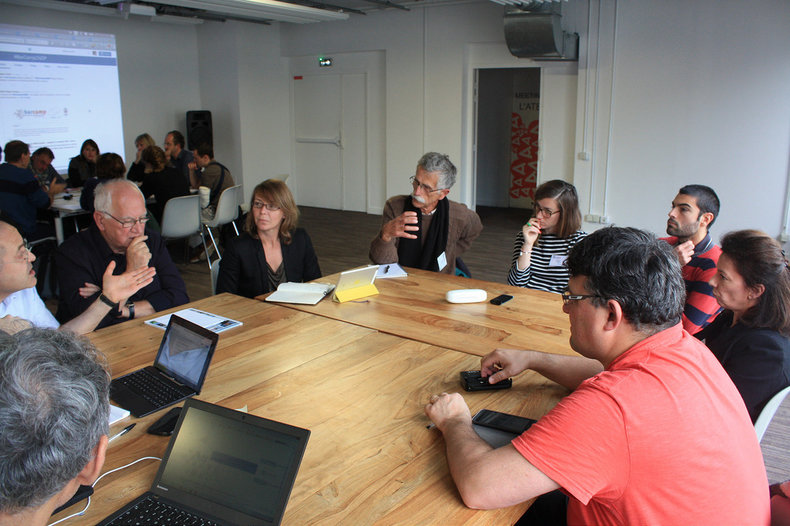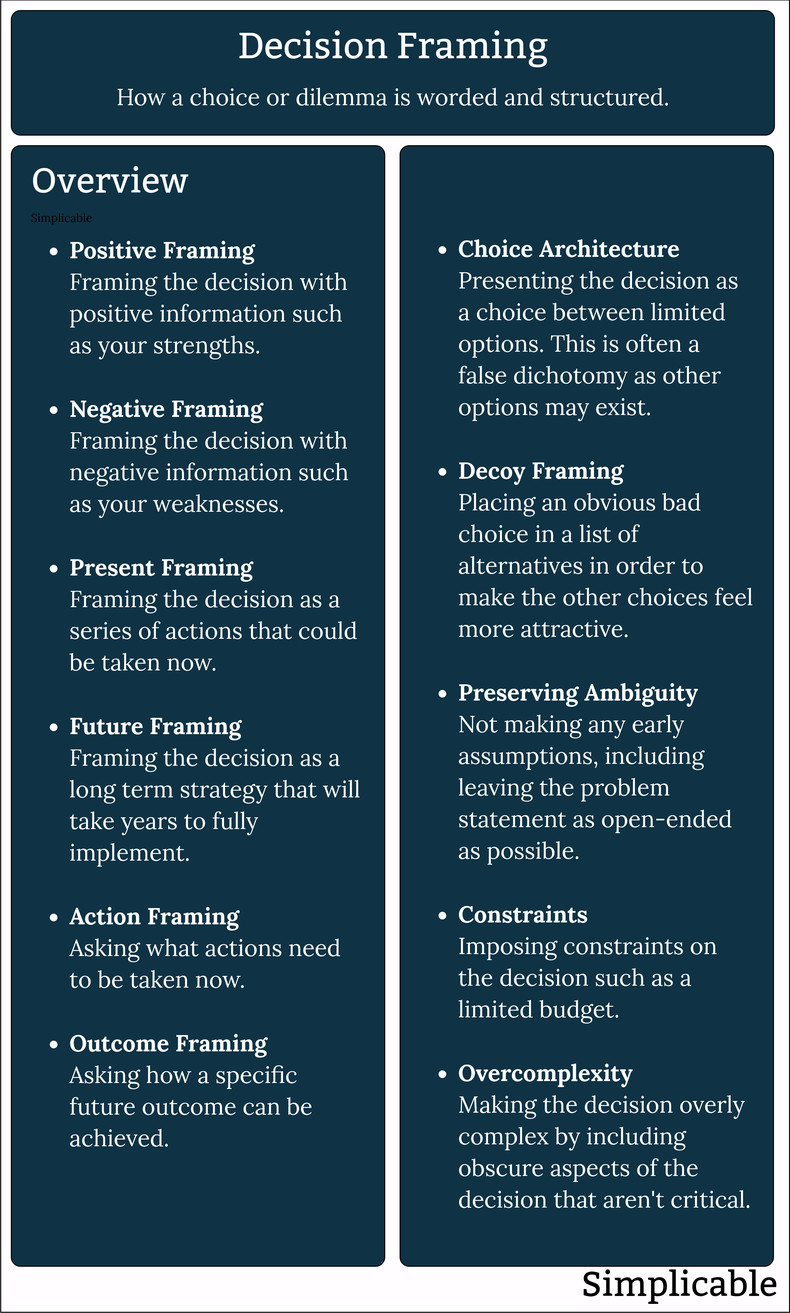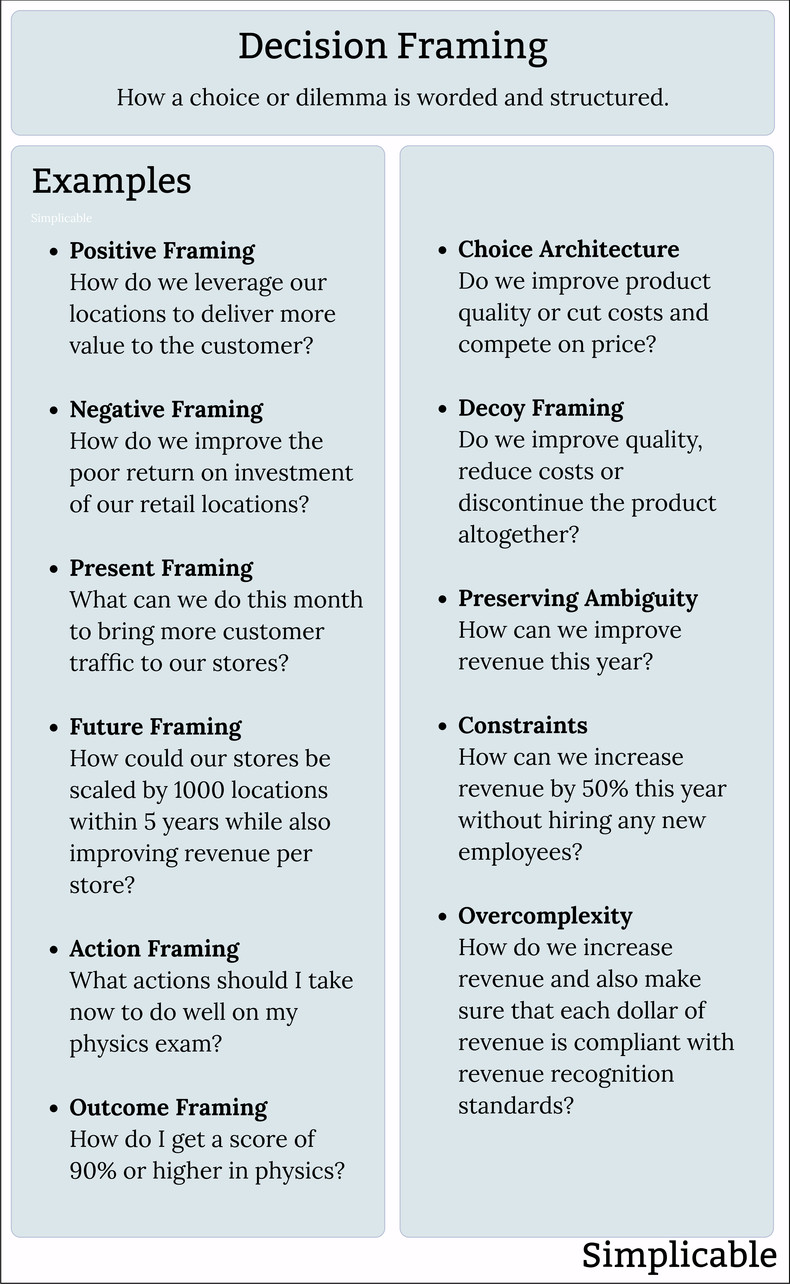
Preserving Ambiguity
Preserving ambiguity is the idea that a decision statement be as wide open as possible in order to allow for creative decisions. This principle can be applied throughout the decision making process to avoid imposing assumptions and constraints too early. For example, a decision statement such as "what type of park should we create?" assumes that a particular area will become a park. A statement such as "what type of public space should we create?" leaves open more possibilities.Creativity of Constraints
Creativity of constraints is the idea that well designed initial constraints can improve creativity and efficiency. For example, a decision statement such as "how should I get an education without paying any tuition?" is far more difficult to answer than "where should I go to university?" As such, the more constrained decision statement requires more creative alternatives. Constraints can be added and removed from a decision statement to generate alternatives. For example, "what university program should I choose with the constraint that it needs to pay for itself with higher salary prospects within 5 years?"Positive Framing
Framing a decision in an optimistic light. For example, "what steps should we take to delight every customer?"Negative Framing
Framing a decision in an pessimistic light. For example, "what should we do to prevent customer defections given that our products are lower quality than the competition?"Risk Framing
Presenting a situation as either a risk or opportunity. For example, "we could lose more customers" vs "we could capture more market share."Present Framing
Framing the decision as a series of actions that could be taken now. For example, "which large accounts can we upsell to in order to boost revenue by 20 percent?"Future Framing
Framing the decision as a long term strategy that will take years to fully implement. For example, "how can we build our customer base to achieve 50% market share within 5 years?"Action Framing
Asking what actions need to be taken to achieve goals such as "what do we need to do now to improve customer retention next month?"Outcome Framing
Asking how you can achieve some desired outcome such as "how do we reduce customer attrition to less than 5 percent?"Overcomplexity
A decision that is framed with complex language and structure such that a regular person has trouble understanding it. For example, a legal agreement for software that needs to be accepted by every user that contains complexities that only a lawyer would fully understand.Choice Architecture
Breaking a decision into a series of successive choices with a structure. Often used to influence. For example, a marketing page for a bicycle may begin by asking you to select a color and then proceed to selecting a model and options. This can result in escalating commitment on the part of the customer.False Dichotomy
A false dichotomy is an incorrect assertion that a decision is between two alternatives when more options exist. For example, do we want to compete on price or quality?False Alternative
Misrepresenting an alternative. For example:Do you want to subscribe to our investing newsletter?
✓ Yes ✘ I want to invest recklessly without being informed
✓ Yes ✘ I want to invest recklessly without being informed
Decoy Framing
Placing an obvious bad choice in a list of alternatives. This is commonly done in price lists. When customers see that one price is better than the others they may feel an impulse to buy.Ice Cream Cones
1 cone - $5
2 cones - $14
5 cones - $20
The prices in the list above range from $4 - $5 per unit except the second option that costs $7 a unit.1 cone - $5
2 cones - $14
5 cones - $20
Overview
The following are common types of decision framing:
Additional Examples
The following are addition examples of common approaches to decision framing.
| Definition: Decision Framing | ||
Type | ||
Definition | The way that a choice or dilemma is worded and structured. | |
Related Concepts | ||




































